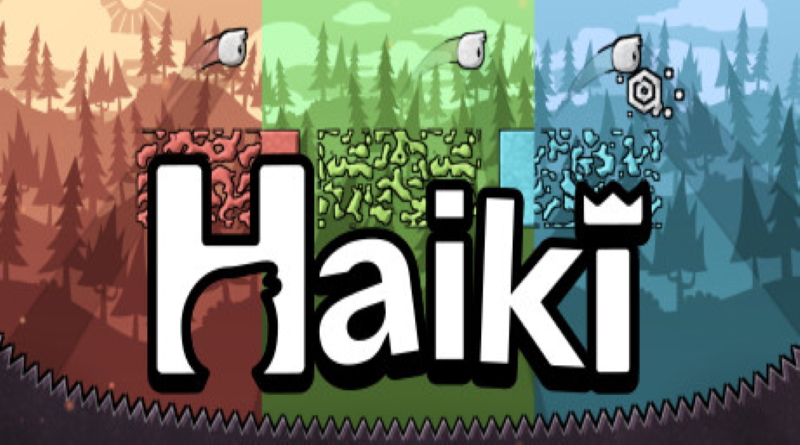
Want to get ahead? Get a hat! Collect dapper, dashing and dandy hats on your journey up from the gutter. You’ll need precision jumps and keen reactions to survive the 80 hand-crafted levels standing between Haiki and victory.ĭie, die and die again until your reflexes are sharp enough to face the headless Baron and get your body back.

Leap from wall-to-wall, across chasms, over spikes. You control Haiki's severed head, on an epic journey to defeat the slash-happy Baron Nohead. Dive head-first into four worlds of colour-switching, laser-dodging, lightning-fast action. Haiki is a diamond-hard platformer that rewards skilful play and punishes errors MERCILESSLY. ISBN 978-90-04-15709-5.A BRUTAL precision platformer where decapitation is just the beginning! Japanese Studies Library, Volume 27: Haikai Poet Yosa Buson and the Basho Revival. "Collaboration in the 'Back to Bashō' Movement: The Susuki Mitsu Sequence of Buson's Yahantei School," Early Modern Japan, Fall 2003, page 5. Matsuo Basho’s Poetic Spaces: Exploring Haikai Intersections. Bashō's Haiku: Selected Poems by Matsuo Bashō, State Univ. ^ Nobuyuki Yuasa trans., The Narrow Road to the Deep North (1983) p.^ R H Blyth, A History of Haiku Vol I (1963) p."Haikai." "Official Definitions of Haiku and Related Terms." 2004. The word haiku (pronounced hahy -koo) is derived from the Japanese word hokku meaning starting verse. Officials say hundreds of people are reportedly dead and thousands are injured. Haikus or haiku are typically written on the subject of nature. Video shows damage near the epicenter in Les Caves, Haiti after the 7.2-magnitude earthquake. "Haikai 1973/1976." "Official Definitions of Haiku and Related Terms." 1973/1976. A haiku is a specific type of Japanese poem which has 17 syllables divided into three lines of 5, 7, and 5 syllables. Shiki considered Buson a painter in words and a visual poet, and Shiki's writings during the 19th century formed the foundation for the appraisal of Buson’s work in most of the 20th century. Shiki also rediscovered Yosa Buson, a prominent "Back to Bashō" poet and painter who died in 1784. Until then, haiku had been called hokku, a term which refers to the first verse in a renga sequence. In the late Meiji period, the poet and literary critic Masaoka Shiki (1867–1902) first used the term haiku for the modern, standalone verses of haikai that Bashō had popularized.

The movement had followers all over the country, due in part to the itinerant habits of many of its members." The revival movement members competed with the tentori poets, who neglected the craft of poetry in favor of dazzling readers with wit, "favor zoku 俗, the mundane or commonplace, over ga 雅, the elegant and refined". Prominent poets of this movement included Yosa Buson (1716-1783), Miura Chora (1729-1780), Takai Kitō (1741-1789), and Wada Ranzan (d. The 18th century reform movement, lasting from around the 1730s to the 1790s came to be called the Bashō Revival.

Bashō Revival Ī new group of poets emerged in the mid-1700s who "condemned the commercialized practices contemporary haikai and argued for a return to the ideals of Matsuo Bashō". In crystallizing the newly popular haikai, he played a significant role in giving birth to modern haiku, which reflected the common culture. In contrast to the traditional Japanese poetry of his day, Bashō’s haikai treated the ordinary, everyday lives of commoners, portraying figures from popular culture such as the beggar, the traveler and the farmer. He composed haikai masterpieces in a variety of genres, including renku, haibun, and haiga. For Bashō, haikai involved a combination of comic playfulness and spiritual depth, ascetic practice and involvement in human society. H1-Key is a South Korean girl group formed and managed by Grandline Group (GLG) and Sony. He made his life’s work the transformation of haikai into a literary genre. Matsuo Bashō is one of the most famous poets of the Edo period and the greatest figure active in Japanese haikai during the latter half of the seventeenth century.


 0 kommentar(er)
0 kommentar(er)
